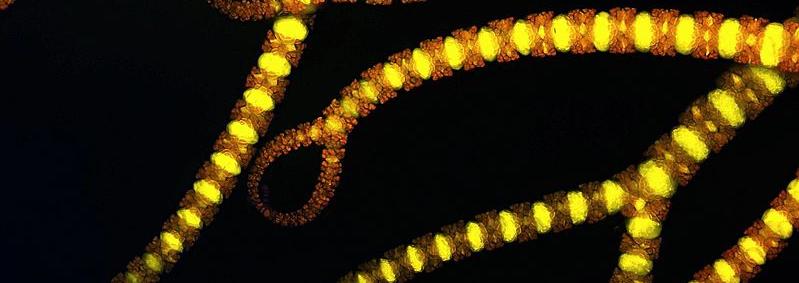Doctoral thesis found out how to better value Baltic Sea's red algae
Doctoral student of Tallinn University School of Natural Sciences and Health Mihkel Saluri defended his thesis, in which he observed biomacromolecules contained in the Baltic Sea's red algae and their potential application in various fields.

Protein pigments (phycobiliproteins) and gelling polysaccharides can be found in red algae. These are highly valued components used in pharmacology, cosmetics, the food industry and biochemistry. Protein pigments in red algae had not been studied in depth before Mihkel Saluri's doctoral thesis. Polysaccharides (furcellaran) have been industrially extracted and studied only from the Furcellaria lumbricalis algae, however, it is not known to what extent the chemical structure of these molecules varies.
To find new potential bioresources, Mihkel Saluri characterised protein pigments from the following red algae species of the Baltic Sea: Furcellaria lumbricalis, Coccotylus truncatus, Ceramium tenuicorne, Rhodomela confervoides and Polysiphonia fucoides. For his research, the doctoral student used the high-performance liquid chromatography method.
Mihkel Saluri explains that he extracted larger amounts of pigment from the red algae F. lumbricalis using slightly acidic buffers and that these results could be further amplified by subjecting the algae to enzyme, thermal or ultrasound treatments. "Widely used quantification formulas based on spectrophotometry overestimated the amount of R-phycoerythrin in red algae by several hundred percent compared with the chromatography method," says the author of the thesis.
In addition, Saluri found a strong correlation between the harvesting depth of algae and their concentration of phycobiliprotein, but found no dependency on season. This may play a future role in choosing harvesting sites for the algae in order to maximise extractable biomass.
Additionally, it was found that red algae C. tenuicorne and R. confervoides contained over one percent of protein pigments per dry mass. Saluri adds that he extracted pure R-phycoerythrin from red algae F. lumbricalis, C. truncatus and C. tenuicorne, the latter containing pigment with a purity and spectroscopical properties on par with that of analytical standard substances. Saluri claims that the purity of the red pigment extracted from the other two species was lower, however, it was still high enough to use in the food and cosmetic industries.
Summarising the outcomes of his doctoral thesis, Mihkel Saluri said that the measuring of phycobiliproteins in crude extracts of red algae has been somewhat imprecise, but the chromatography method has helped improve its quantification. In addition, he also found that algae gathered from lower depths have a larger pigment content, which can help with choosing raw materials in the future.
He also determined furcellaran's average chemical makeup, which can help with finding new uses for this in the future.
The title of doctoral student Mihkel Saluri's thesis is 'Beneficial macromolecules from red algae of the Baltic Sea: characterisation, spatio-temporal variations and potential applications'. The public defence of the thesis was held on Friday, 4 September.
The doctoral thesis was supervised by Tallinn University School of Natural Sciences and Health biopolymer tenure track associate professor Rando Tuvikene and University of Tartu research track associate professor Tiina Paalme. Opponents of the thesis were Norwegian University of Life Sciences research track associate professor Svein Halvor Knutsen and Tallinn University of Technology research professor Aivar Lõokene.
The doctoral thesis is available in the TU Academic Library digital environment ETERA.

